Art World
Why Performance Has Become the Essential Art Medium of the 21st Century
In the aftermath of Anne Imhof's triumph with 'Faust,' we explore the explosive rise of the medium.

In the aftermath of Anne Imhof's triumph with 'Faust,' we explore the explosive rise of the medium.

Across institutions and biennials, project spaces, and even the commercial sector, a turn towards performance is emerging within the contemporary art landscape. Following a slow but steady boil over the past year, Anne Imhof’s immensely popular, Golden Lion-winning Faust at this year’s Venice Biennale arguably crowned performance as the art world’s reigning medium right now.
Though Imhof’s success in Venice certainly solidified the art form as au courant, its rise can be traced to a string of performance-based exhibitions that made a splash across Europe in the past year, most notably Tino Sehgal at the Palais de Tokyo in Paris; Donna Huanca at the Zabludowicz Collection in London; “Ten Days Six Nights“ at London’s Tate Modern; and (again) Anne Imhof’s Angst cycle at the Kunsthalle Basel and Berlin’s Hamburger Bahnhof.
Meanwhile, London’s fairly young performance-only art festival, the annual Block Universe—which has just closed its third edition—enjoyed its most popular iteration yet, with commissions by the likes of performances artists Liz Magic Laser and Eglė Budvytytė.
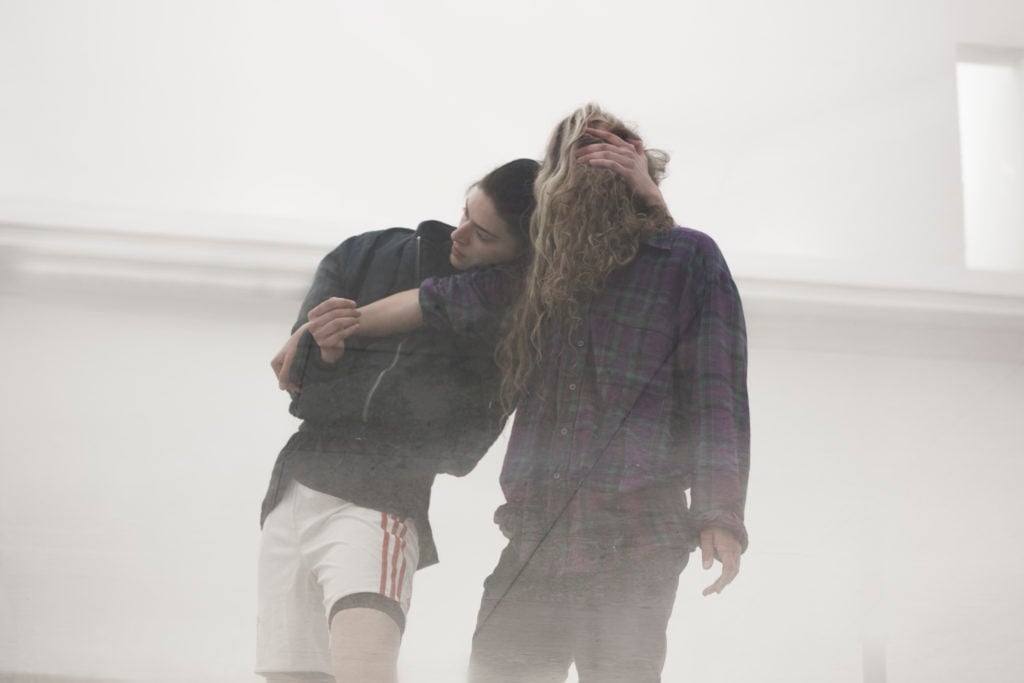
Anne Imhof’s Faust at the 2017 Venice Biennale. Photo ©Nadine Fraczkowski.
The rise in events like Block Universe arguably stems from the original, mother-of-all performance festivals: Performa. Founded in 2004 by Roselee Goldberg, Performa is a biennial event centered around commissioned works that temporarily inhabit venues across New York City for a month-long celebration of the medium. Under Goldberg’s direction, artists working in various mediums are encouraged to strengthen their performance muscle—either by building upon an existing practice or experimenting with it for the first time.
Past participants include veritable luminaries, both in and outside of the field: Ragnar Kjartansson, Mika Rottenberg, Simon Fujiwara, Alexandre Singh, Yvonne Rainer, Isaac Julien, and Francis Alÿs are among the long list of artists who have contributed to Performa’s former editions.
In the past, time-based, intangible work requiring an actively-engaged audience was typically left in the shadow of the more easily-accessed, traditional art object. So, what is it about performance that has suddenly become so alluring now?
It is, perhaps, the much-discussed question of audience engagement that is making performance thrive. With our cultural dependence upon screens moving us ever-further away from one another, the medium brings one back into the moment—the here and now—by drawing attention to what is going on in one’s immediate surroundings, creating a communal atmosphere that includes both the audience and the artist in a move that perhaps echoes Nicolas Bourriaud’s theory of relational aesthetics.
“I think many artists are moving away from an emphasis on solitary studio practice and gallery display towards an interest in staging communal situations, in sharing an experience of art,” Catherine Wood, senior curator of Performance at the Tate, told artnet News.
Along with Tate’s film curator Andrea Lissoni, Wood spearheaded a series of performances, “Ten Days Six Nights,” this past March and April at the Tate Modern. (The event, it is worth noting, was sold out.) The series was self-described as intended to “mark a new departure in the concept of the art exhibition: from a static presentation to an experience of art that unfolds through time.”
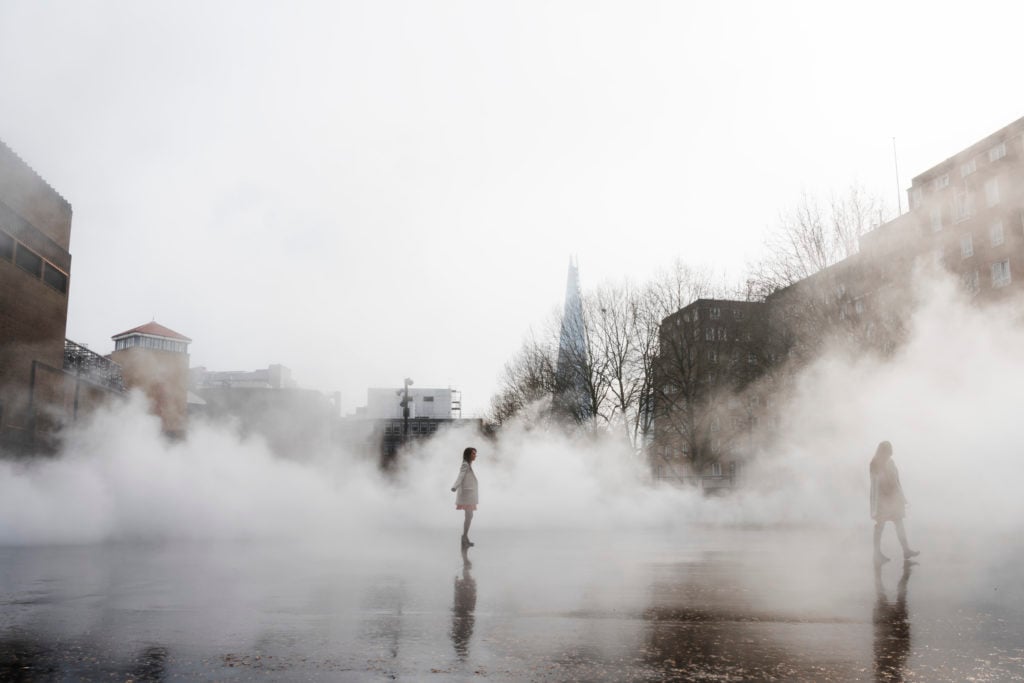
Fuji Nakaya, London Fog (2017). Ten Days Six Nights, Tate Modern Tanks, March 2017. Courtesy Tate Modern.
Artists on the roster included rising stars, such as Paul Maheke and Isabel Lewis, as well as seasoned veterans like CAMP, a collective founded in 2004 that is known for its engagement with technology, or Phill Niblock, whose experimental career spans 50 years.
Maitreyi Maheshwari, program director at the Zabludowicz Collection in London, aligned with Wood’s points when speaking with artnet News: “Since so much of how art is seen is now through the circulation of images online or through Instagram, I think there is a real sense of trying to re-examine the experience of an artwork,” she said. “Many artists are also keen to reject the forms of market-led commodification of artworks, which is still very much focused on material objects.”
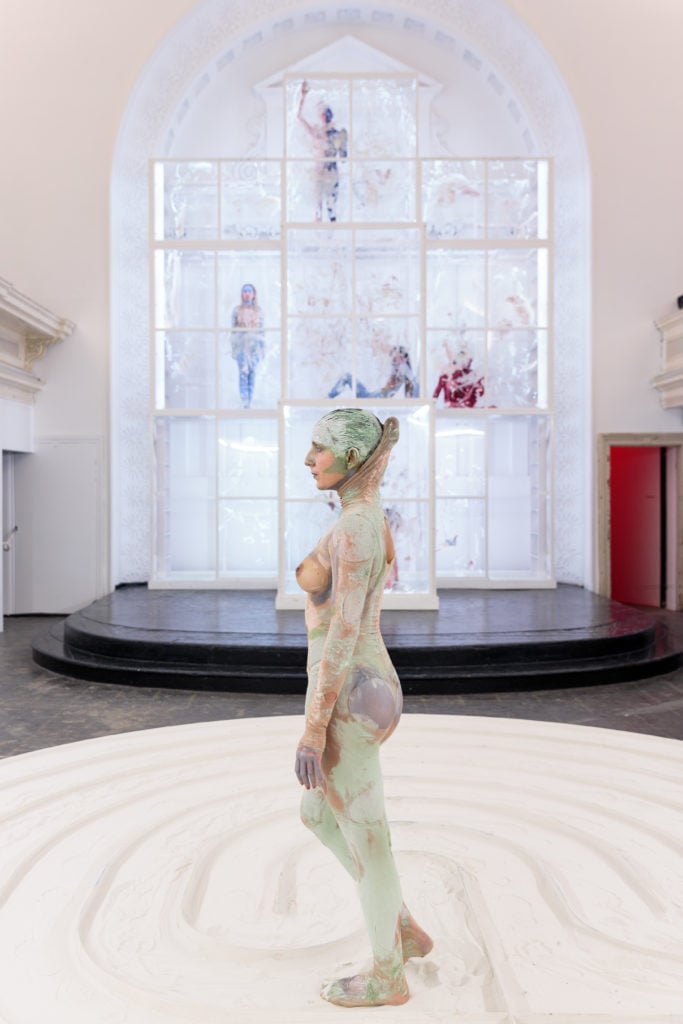
Donna Huanca, SCAR CYMBALS (2016). Performance View. Photo Tim Bowditch, courtesy the artist and Zabludowicz Collection.
Maheshwari organized an exhibition of Donna Huanca’s work at the Zabludowicz Collection last year, and again, the emphasis was on the interaction with the audience, with daily, six-hour-long performances. (Huanca’s performaces can be viewed in the Unlimited section at Art Basel in Basel next week.)
“Donna and I had a number of conversations about how performances would feature in the work. From these it became clear that the tension created between the visitor and the models was a really important aspect of the work,” she said.
Dmitry Komis, director of the David Lewis Gallery in New York, works closely with multimedia artist Dawn Kasper, who is currently included in “Viva Arte Viva,” the Christine Macel-curated International Exhibition at the 57th Venice Biennale.
Yet, when speaking about the origins of the artist’s relationship with the gallery to artnet News, Komis too highlighted the importance of the communal—as opposed to monetary—aspect: “There was never an expectation of the work she would make at the gallery and how ‘commercial’ it would be,” he said. “It was more about a community of artists, and Dawn was part of that community.”
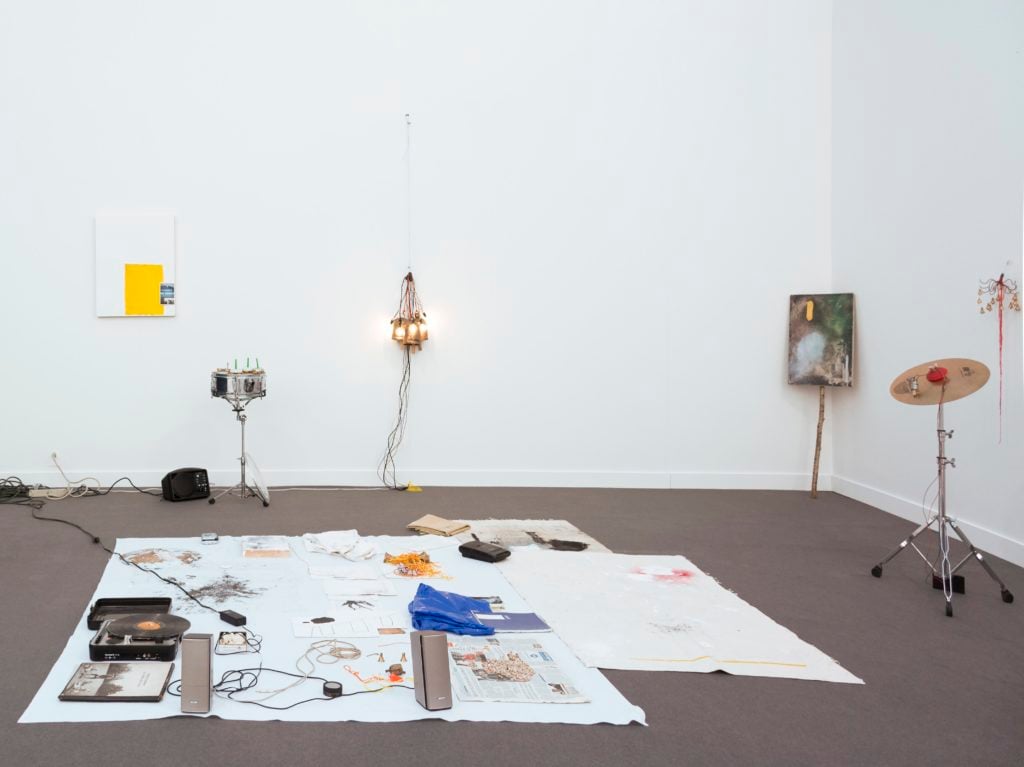
Dawn Kasper at David Lewis’s 2017 Frieze New York booth. Courtesy the artist and David Lewis, New York. Photo: Zenzile Sky Lark
However, Komis also recognizes that Kasper’s work is indeed profitable. “The gallery has sold Kasper’s performative installations and individual works to both public and private collections,” he said, citing Frieze New York, Art Basel Miami, LISTE Art Basel, and Artissima all as examples of fairs in which Kasper’s work has been a success among collectors.
“Her work does very well at art fairs. It stands out and people are immediately drawn to the work and the story,” Komis explained, adding that institutions are also eager to scoop up Kasper’s work. “Her first show with the gallery ‘& sun & or THE SHAPE OF TIME’ was sold to a European foundation as one work. Her Venice installation is sold as one work, and we are currently in talks with a few institutions.”
“These works challenge the museum’s value system and its way of doing things in exciting ways, shifting the emphasis from valuing material objects towards thinking about how a work can be encountered through time, or how a document of a past action can simply fire the imagination,” Wood explained in regards to Tate’s acquisitions of performance works.
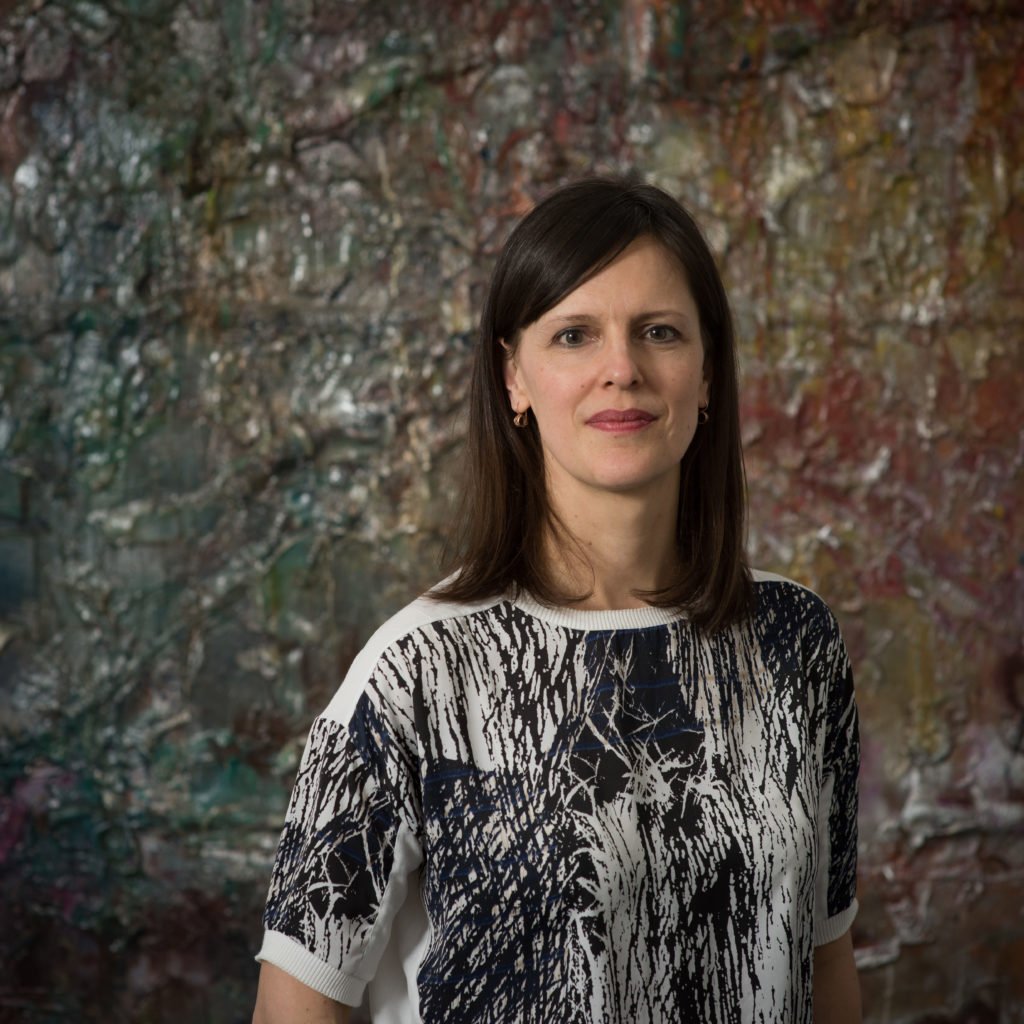
Catherine Wood, Tate’s senior curator of performance. Photo Hugo Glendinning, 2016, courtesy Tate.
“The [Zabludowicz] Collection is still relatively new to collecting performance art and so far this has tended to take the form of documentation or objects left over or produced from performances,” Maheshwari said.
Another example of an artist who has successfully navigated the medium’s monetary element is the performance titan Tino Sehgal, who famously refuses to permit the documentation of any of his performances (or “situations,” as his pieces are known in art world lexicon).
Sehgal’s specifications subvert how the art market typically functions: He leaves no tangible trail, but still renders the works purchasable by allowing for their endless repetition. In the end, Sehgal’s clever manipulation of the rules means he can maintain artistic credibility while still making financial gains.
Helena Reckitt, author of the reader on performance pioneer Sanja Iveković, further elaborated on the medium’s marketability: “Probably the best-known example of the re-performance trend is Marina Abramović’s Seven Easy Pieces of 2005, for which she turned time-based performance works into tableaux vivants,” she said, referring to these profitable reenactments.
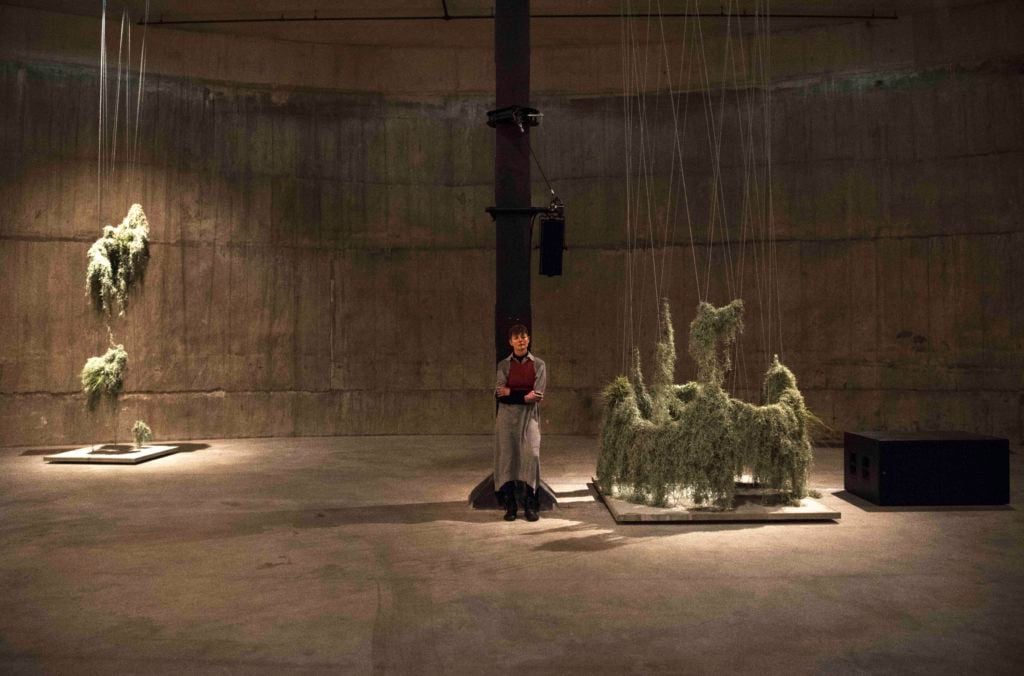
Isabel Lewis, Occasion (2017) part of “Ten Days Six Nights” at Tate Modern Tanks, March 2017. Image courtesy Tate.
But, beyond its proven profitability, the appeal of performance might lie in our current craving for connection, which is what makes this medium so relevant and compelling.
“Performance is an acknowledgement that our ways of doing things and our hierarchies of value are up for grabs,” Wood explained. “Performed gestures and actions are part of it, but it’s a state of liveness, of potential for change, of positions and relations that artists are concerned with.”
“I also think Robert Rauschenberg’s statement—that he wanted to make an art that ‘refuses to settle’—is key to our time,” Wood added.